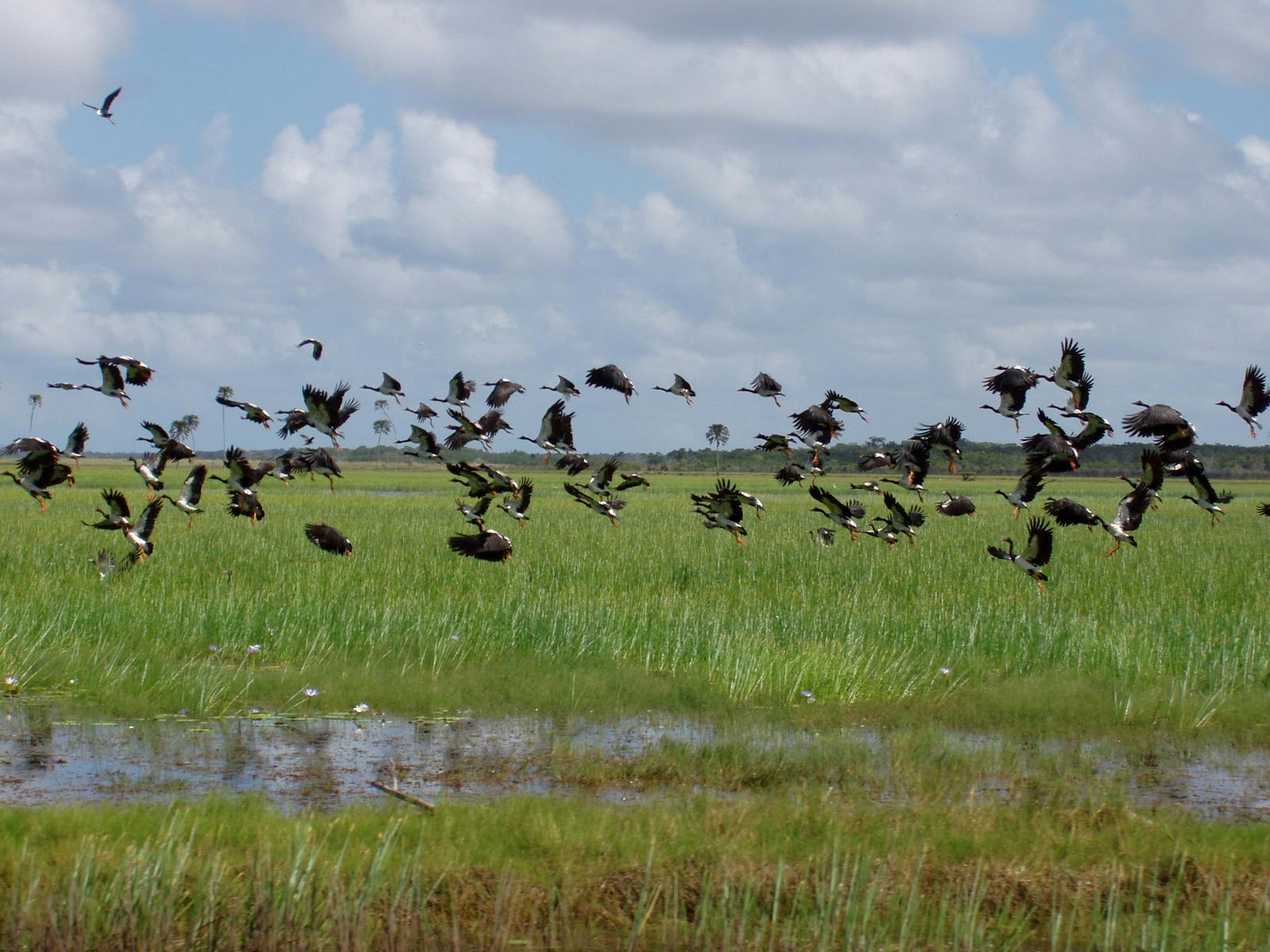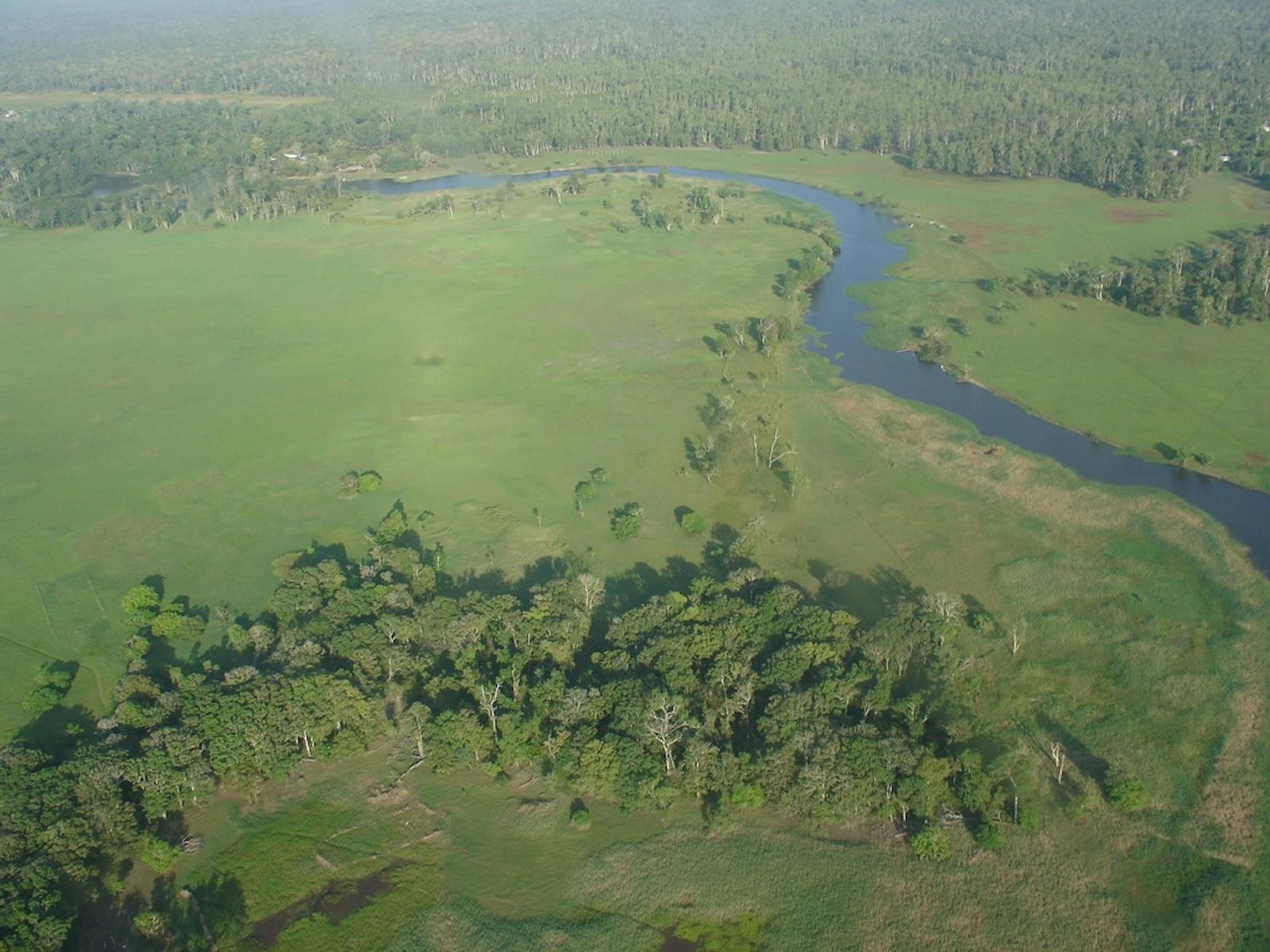Trans Fly Savanna and Grasslands
The ecoregion’s land area is provided in units of 1,000 hectares. The conservation target is the Global Safety Net (GSN1) area for the given ecoregion. The protection level indicates the percentage of the GSN goal that is currently protected on a scale of 0-10. N/A means data is not available at this time.
Bioregion: New Guinea & Surrounding Islands (AU13)
Realm: Australasia
Ecoregion Size (1000 ha):
2,679
Ecoregion ID:
188
Conservation Target:
41%
Protection Level:
9
States: Papua New Guinea, Indonesia
The Trans Fly Savanna and Grasslands ecoregion is one of the most extensive lowlands on the island of New Guinea. It is seasonally dry, unusual for the island of New Guinea and more like that of northern Australia. Monsoonal savanna and grassland habitat along the southernmost coast of New Guinea is a mecca for waterbirds during the wet season. Magpie geese, whistling ducks, and egrets abound in great numbers. Spangled kookaburra hunt in the drier areas.
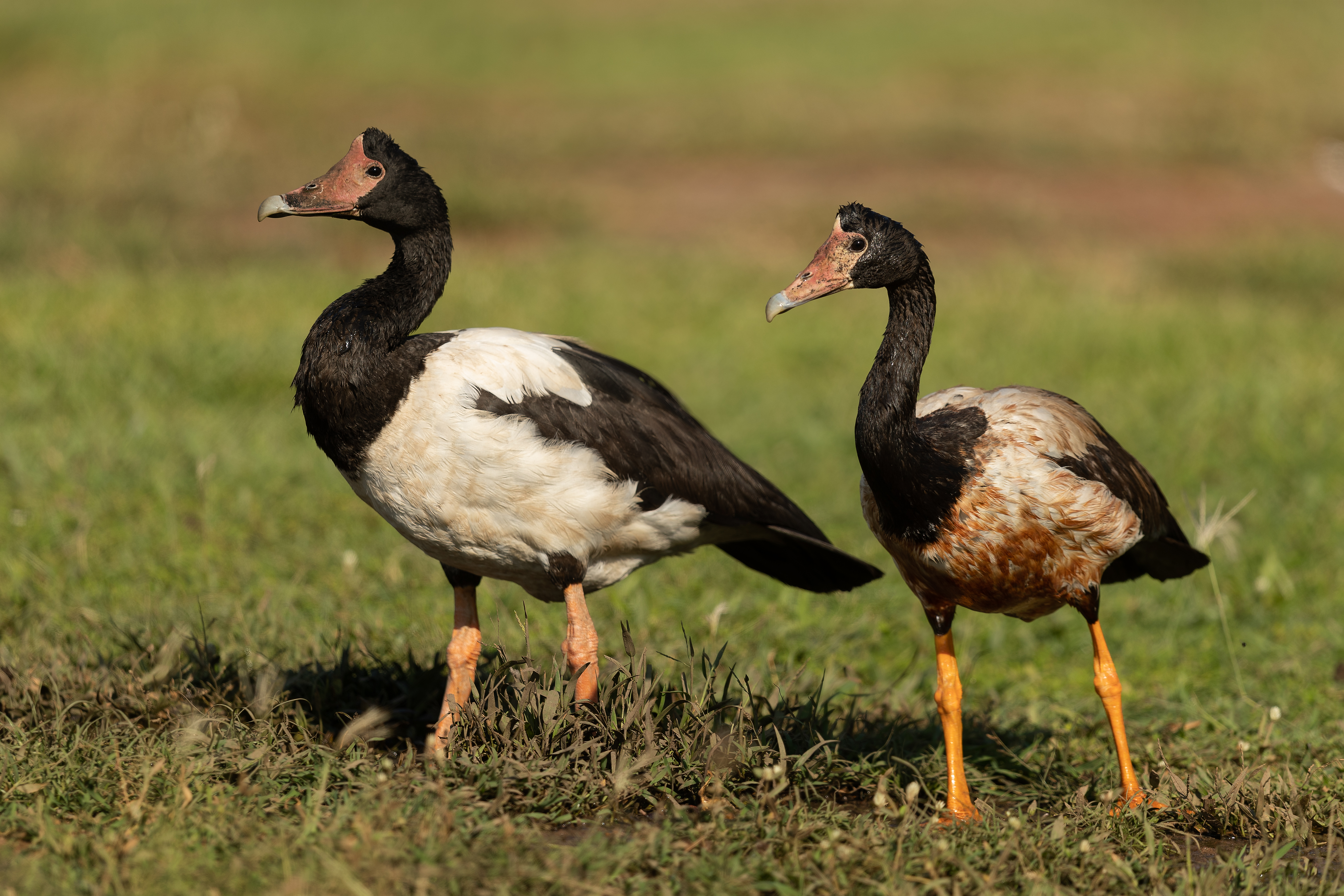
The flagship species of the Trans Fly Savanna and Grasslands ecoregion is the magpie goose. Image credit: Creative Commons
Most of the landscape is grasslands and savanna, though there are areas of dry evergreen forest. The seasonal rainfall, local relief, drainage, and the frequency of burning by local people produce varied habitats. The savannas have strong affinities with those of northern Australia, with dominant trees such as Eucalyptus, Albizia, and Melaleuca. Melaleuca forest dominates areas that are submerged in up to a meter of water during the wet season. The bamboo Schizistachyum occurs between the adjoining forests and the savanna vegetation of the monsoonal area.
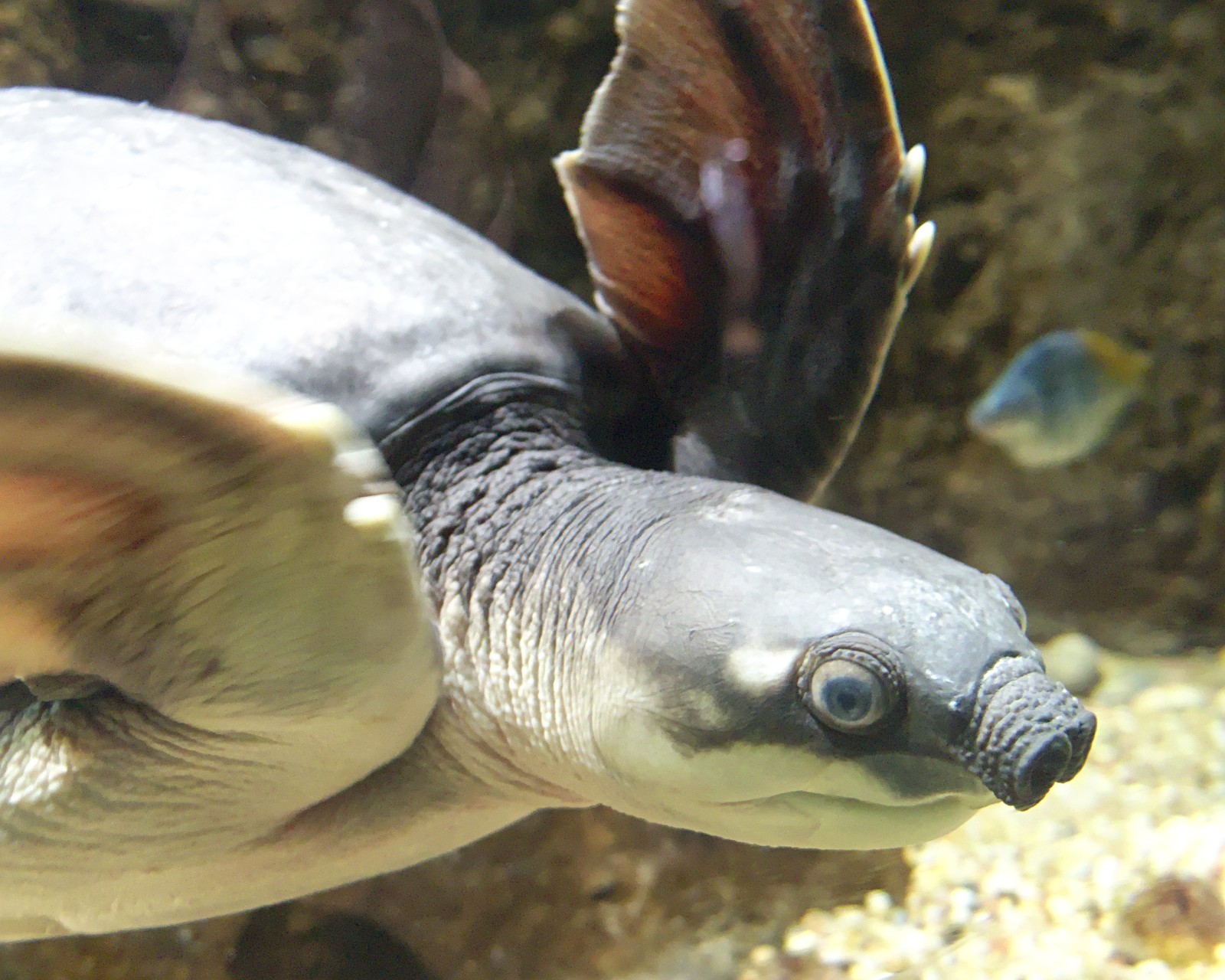
Pig nosed turtle. Image credit: Creative Commons
Forty-four mammal species occur here with five species largely restricted to the ecoregion. The dusky pademelon and bronze quoll are among the larger species. Three of these species, the Papuan planigale, the bronze quoll, and the dusky pademelon are considered Vulnerable on the IUCN Red List. The Trans Fly is also a globally significant wintering ground for migratory waders and waterfowl from Australia and the Palearctic, and represent a portion of the Endemic Bird Area in the region. Several endemic amphibians and reptiles occur only in this ecoregion, including the pitted turtle, the only known species of its family.
Much of the ecoregion remains intact, mostly because access from the outside of the ecoregion is poor, though savannas are burned at the end of the dry season by some of the local tribal groups. Traditional agriculture is also practiced around settlements. The herbivory of the introduced rusa deer is altering grassland ecosystems. Two large, adjacent protected areas, Wasur National Park and Tonda Wildlife Management Area (Papua New Guinea’s largest protected area), protect nearly 40% of the ecoregion.
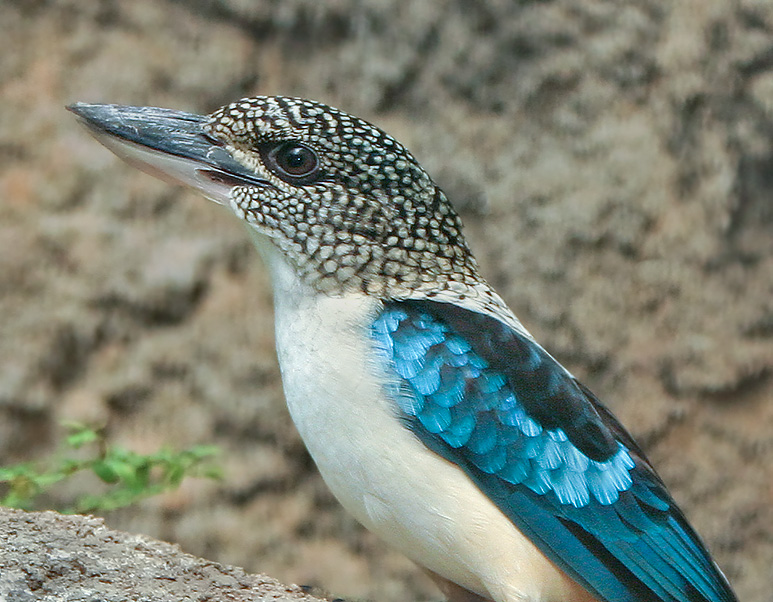
Spangled kookaburra. Image credit: Doug Janson, Creative Commons
The priority conservation conservation actions are to: 1) strengthen the custodial management of the protected area by local people; 2) control hunting and habitat conversion pressure from transmigrantion into Wasur Nationa Park; and 3) monitor and control the impact of the introduced rusa deer to the grassland habitats.
Citations
- Adams VM, VI Tulloch, HP Possingham. 2017. Land-sea conservation assessment for Papua New Guinea. A report on the work undertaken to fulfil the terms of the project Review and Integration of the Terrestrial and Marine Program of Works on Protected Areas. PNG CEPA, University of Queensland, Global Environment Facility, UNDP, Brisbane. 75 pp.
- Beehler BM, TK Pratt. 2016. Birds of New Guinea Distribution, Taxonomy, and Systematics. Princeton University Press, Princeton.
- Bowe M, N Stronach, R Bartolo. 2007. Grassland and savanna ecosystems of the Trans-Fly, Southern Papua. In A Marshall, B Beehler (eds) The Ecology of Papua, Periplus, London.
